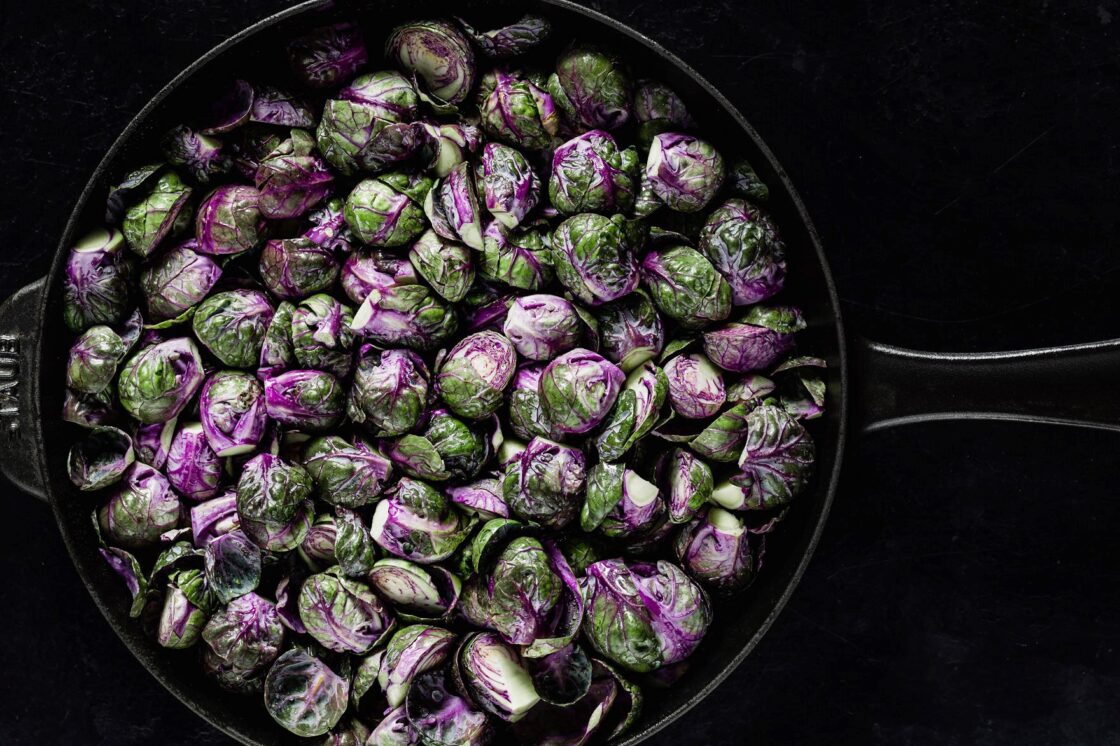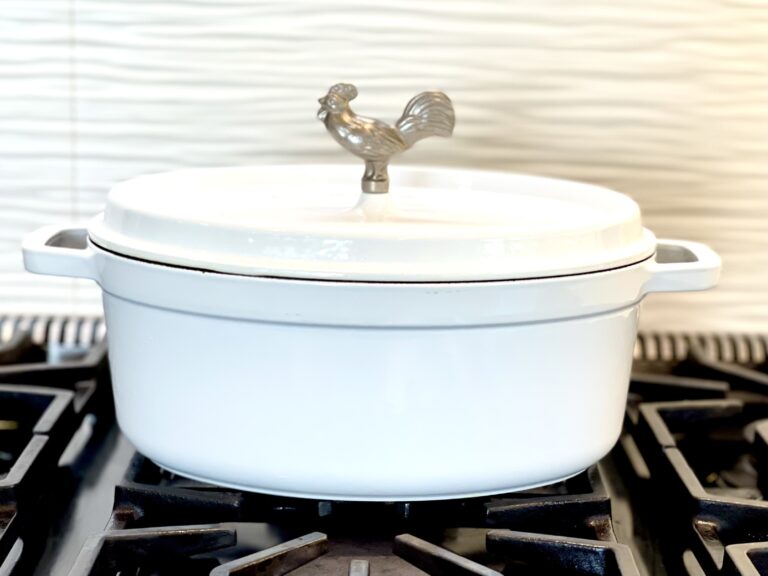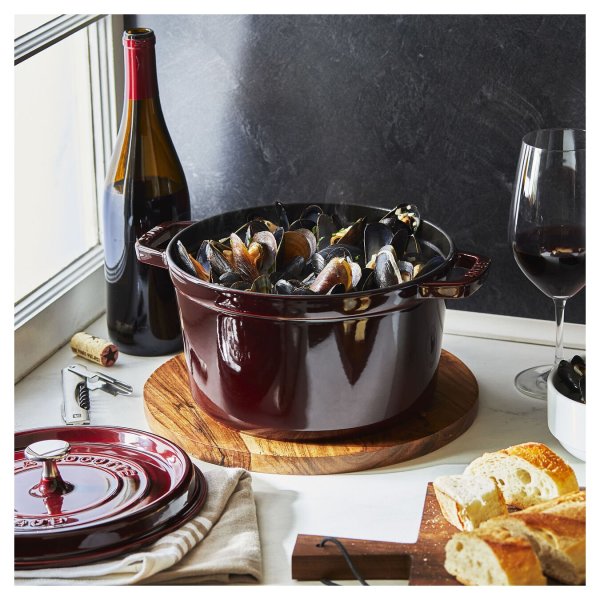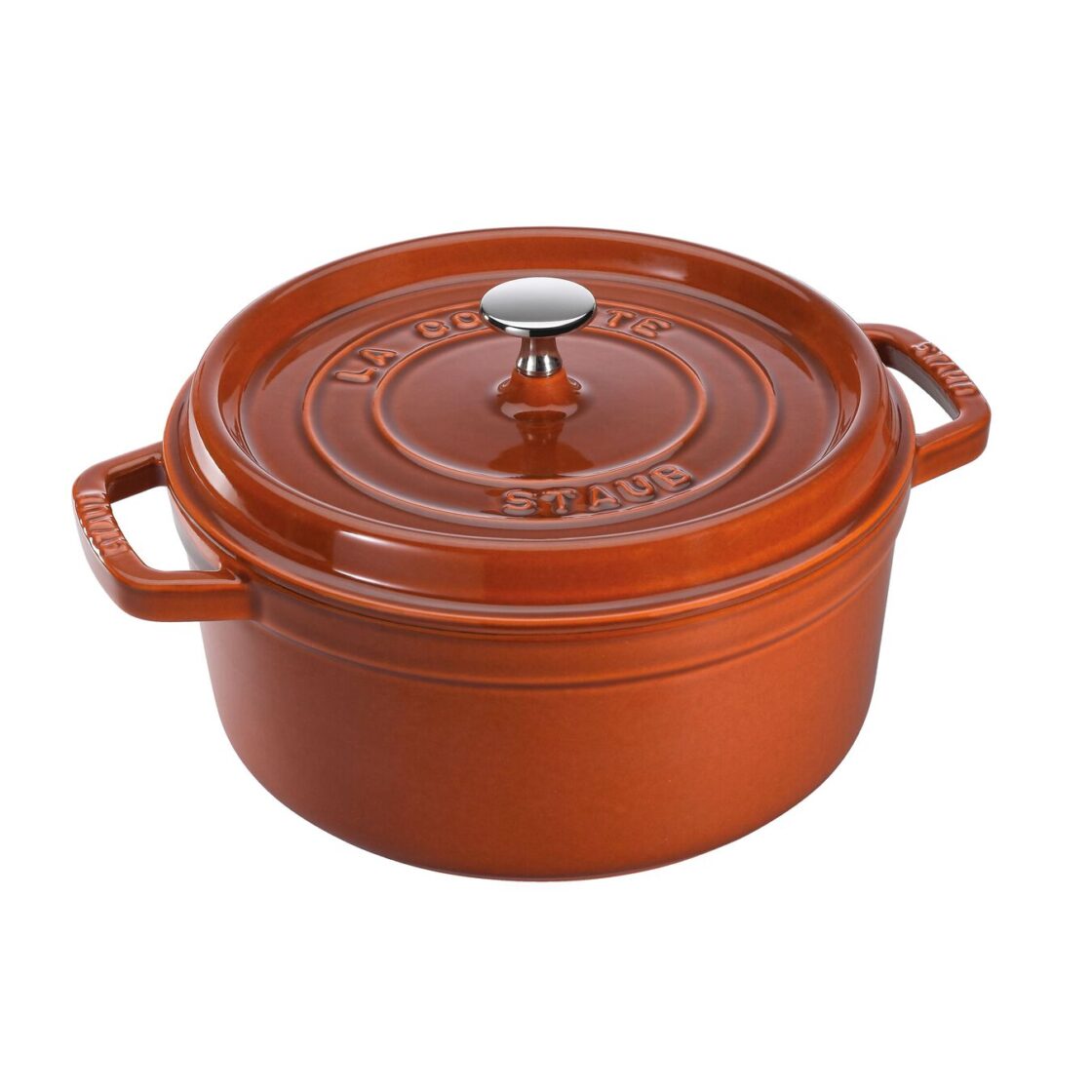Staub’s Clean Enameled Cast Iron Cookware Is as Beautiful as It Is Useful
Staub enamel cast iron cookware, time-tested and timeless.

*Affiliate disclosure.
Enameled cast iron is the cooking vessel of choice for many French culinary classics, from coq au vin to beef bourguignon (not to mention modern faves like white bean stew, braised chard or even mushroom bourguignon). It’s no surprise, then, that France is home to the best in enameled cast iron cookware. In rural France, for nearly 50 years, Staub has been producing cast iron cocottes that have conquered hearts around the world, from famed French chef Paul Bocuse (who contributed to their very conception!) to our very own editor-in-chief Laura Klein.
When it comes to clean, non-toxic cookware (see our guide here), enameled cast iron is boss. Naturally nonstick and made to last a lifetime, these Dutch ovens and cocottes are an essential for any home chef.

Why Choose Staub’s Cast Iron?
Cast iron is beloved for many reasons, but a key is heat retention. You know when you’re making a stew and, after carefully bringing the oil up to temp, you add your meat, only to find the temperature drops and your lovingly sourced, grass-fed beef goes grey instead of brown? Yeah… that doesn’t happen with a Staub cocotte.
Cast iron naturally retains and evenly distributes heat across the cooking surface. Translation: no hot spots, and minimal temperature fluctuation for easy frying, searing, and braising with a perfect result, every time.
Unlike other enamel cast iron, Staub’s cast iron cocotte boasts a unique black matte enamel coating made of glass studded with quartz particles. The resulting surface doesn’t just promote exceptional browning – it also resists wear and tear from metal utensils, which means your pot will look just as good in ten years as it does today – if not better, thanks to all those years of seasoning! It also means that Staub works well for more acidic dishes that regular cast iron might not, like tomato sauce.

And the pot itself isn’t the only part of this cocotte with some unique details. Look under the lid, and you’ll find a forest of tiny spikes, which act like stalactites during braising: each spike becomes a conduit for condensation to continually drop back down into your braise. Can you say (ugh) moist? (But seriously. These are some moist results.)
How It’s Made
To bring these cocottes from the rural French village of Merville (so, so close to merveille, which means marvel, which Staub is), the company relies heavily on the expertise of local artisans. These locals have perfected the creation of Staub’s cocottes over time, explains Chief Marketing Officer Joanna Rosenberg, who notes that casting iron is a “very specific skill,” particularly when it comes to pieces that will later be coated with enamel, as the enamel surface needs to be perfectly smooth.

“When it comes to enamel cast iron,” she says, “nobody does it like the French.”
Each Staub piece takes a week to make, with somewhere between ten and 20 people working on it at various points in its journey. The outside of each piece is coated in three layers of glass enamel, which means rich, intense colors on the finished product. After over 100 different inspections from beginning to end, the cocotte is ready to find a home in your kitchen.
Staub remains true to tradition, and this, Rosenberg explains, means that sustainability and worker rights are naturally built into the company philosophy and core values.
“We’re a family of European-owned factories, whether it’s Staub in France, or Ballarini in Italy, or our Zwilling factory in Germany,” she says. “And they come at it from a very different approach to what I think of as green marketing, American style.”
“These are communities where generations of people have worked at the factories and lived right nearby, within ten miles,” she continues. “And so for them, for a very long time, the factory is part of their community, and whatever output there is from the factory, it’s the water that they drink and their parents drink and their children drink; it’s the air that they breathe; it’s noise that they hear.”
Staub specifically pays special attention to water usage and to the reduction of waste and scrap, reusing and recycling anything that doesn’t meet the company’s high quality standards. And while Staub has always done its own work to improve its environmental footprint, Rosenberg notes that just this year, the company began working with an outside consultancy in an attempt to independently measure its inputs, outputs, and impacts to take even greater strides towards improved sustainability.
But perhaps the biggest eco-conscious element of choosing Staub is the cookware’s lifetime guarantee.
“Think of the resources that go into everything that you have to replace every two years,” says Rosenberg, “versus buying something that you’ll have forever, that you can hand down to somebody else.”
Our Live IG Interview with Staub
OA’s EIC Laura Klein sat down with Rosenberg to chat history, pronunciation, cooking tips and tricks, and more. Check out their interview below.
Staub Cocotte Review

Klein is a trained chef and our resident cookware expert here at OA. She took the Staub six-quart cocotte for a spin at home and quickly fell in love.
“I love the artisan handmade quality of Staub cooking vessels,” she says. “I have several Staub pieces, and each one feels incredibly special and thoughtfully made.”
She’s a huge fan, especially, of the black matte enamel coating, which achieves a better sear and is gorgeous to boot.
“I have other cast iron enamel coated pieces that are finished with a light colored enamel, and over time you can see the wear and tear,” she says. “With the Staub black matte finish you just don’t see it.”
And it’s not just the coating that’s beautiful, when it comes to these time-tested cookware pieces.
“When I look at my cocotte,” says Klein, “I look at it not just as a cooking vessel, but an artistic piece I can leave out on my stove top. You don’t get this type of passion and artistic work with most cookware brands.”
At home, Klein loves serving up delicious sides in their oven and au gratin dishes, while she uses the mini cocottes to serve soup at parties.
“They have a real wow factor for guests and are an immediate conversation starter,” she says. “You can serve anything in these gorgeous dishes and people will eat it!”
Purchase your own Staub cocotte here, and take our Home Chef Quiz to get more personalized clean cookware recommendations as well as exclusive offers not offered on site..
Enameled Cast Iron Products by Staub

Product: Staub 5 QT Tall Cocotte, Grenadine
Description: Staub’s 5-quart tall cocotte, shown here in grenadine, is the ideal vessel for Belgian moules à la marinière, stews, soups, chilis, and breads fit to feed a crowd. This taller version is ideal for cooking larger quantities without taking up precious stove top space. At once a cooking vessel and beautiful serving dish, it can transition straight from the stovetop to a trivet with ease.
Price: Save 50%, $219.99 ($514.00)

Product: Staub 13-Inch Cast Iron Double Handle Fry Pan, Black Matte
Description: When you’re looking to shallow-fry, nothing is better than Staub’s 13-inch cast iron fry pan. Durable and solid with its double handles, this pan transitions perfectly from stovetop to oven: perfect for finishing seared vegetables, grass-fed filet mignon to a perfect medium-rare pink or baking stuffed mushrooms for the ideal crispy top.
Price: Save 30%. $259.99, ($371.00)

Product: Staub 7 1/2-inch Round Gratin Baking Dish, Graphite Grey
Description: Staub’s cast iron gratin dish is the ideal shallow vessel for dishes that are just begging to be topped with cheese, breadcrumbs, or both before a trip through the oven. Think potato gratin, creamed spinach or greens, mac and cheese, or even cornbread with the perfect crust-to-interior ratio.
Price: Save 30%, $209.99 ($457.00)

Product: Staub 5.5 QT Cast Iron Oval Coq au Vin Cocotte, Cherry
Description: Staub’s 5.5-quart cast iron cocotte (shown here in cherry) is ideal for braises to feed a crowd – or that make enough for delicious leftovers! Coq au vin is a clear classic, and then there’s braised artichokes (we love Roman style), kale, short ribs, mushroom or grass-fed beef bourguignon, braised broad beans, or a rich veggie chili are all delicious contenders for the perfect delightful dish to simmer in this pot.
Price: You save: 30%. $349.99 ($500.00)

Product: Staub 4 QT Round Cocotte, Burnt Orange
Description: Staub’s four-quart round cocotte (here in burnt orange) is the perfect vessel for making no-knead bread! Preheating it in the oven will give you the same performance as a professional convection oven, with phenomenal temperature control and excellent moisture retention due to the innovative lid structure.
Price: Save: 30%. $319.99 ($457.00)
*Note! This article contains affiliate links that are independently sourced and vetted by our editorial team which we may earn a commission on. This helps us reduce the number of ads we serve on Organic Authority and help deliver you a better user experience. We are here to help you navigate the overwhelming world of consumer products to source and uncover thoughtfully made, conscious clean products.

